Best climbing fence plants to grow – 9 options to cover your structure in lush foliage and blooms
Choose from these perfect climbing plants for every garden situation
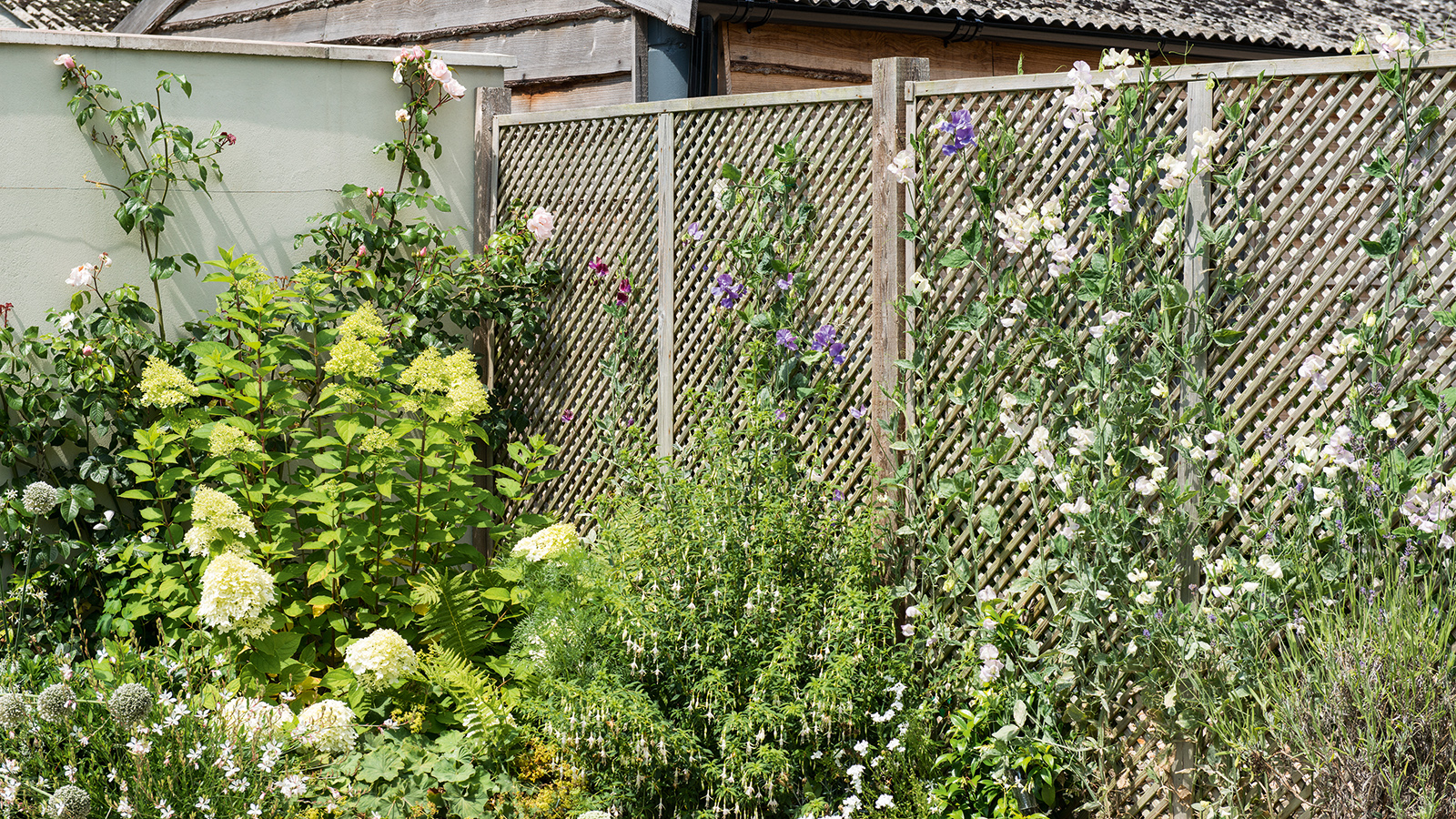
Growing climbing fence plants is a great way to bring extra greenery into garden spaces. These 9 options are all ideal for disguising plain fences and helping them to blend more seamlessly into their surroundings.
Some varieties of climbing plants are self-clinging, meaning they don't require any additional support, others may benefit from having their stems tied onto fences, or trellises as they grow.
Bear in mind that areas near fences tend to be dry patches, so watering your plants regularly when they initially go in the ground is key to success. Remember to select climbing fence plants, not just for their appearance but to find varieties that will suit the conditions of your garden landscaping.
Green up your boundaries with climbing fence plants
These 9 options will cover a fence or wall, as well as making great climbing plants for pergolas and other garden structures.
1. Ceanothus
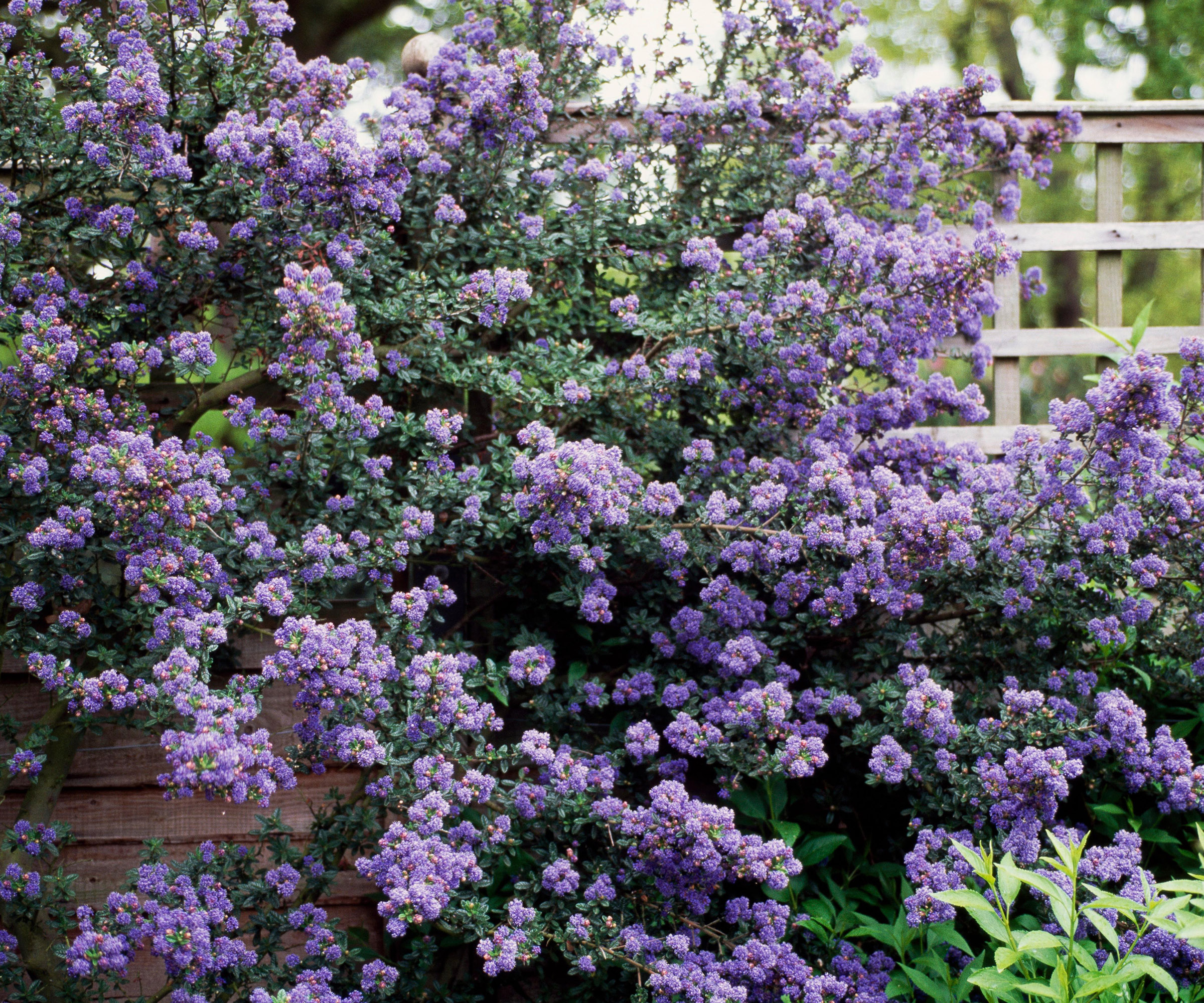
"Ceanothus, also known as Californian Lilac, is a sunshine-loving with vibrant blue, pink, or white blooms, and is a charming climber for garden fences," says Julian Palphramand, Head of Plants at British Garden Centres.
"It thrives in sunny spots, making them perfect for south-facing walls or fences where they can soak up the rays and reward you with a dazzling floral display. Ceanothus is relatively low-maintenance and once established, requires well-drained soil and just a single prune after flowering to keep them in shape and encourage even more blooms next season," says Julian.
2. Passion flower
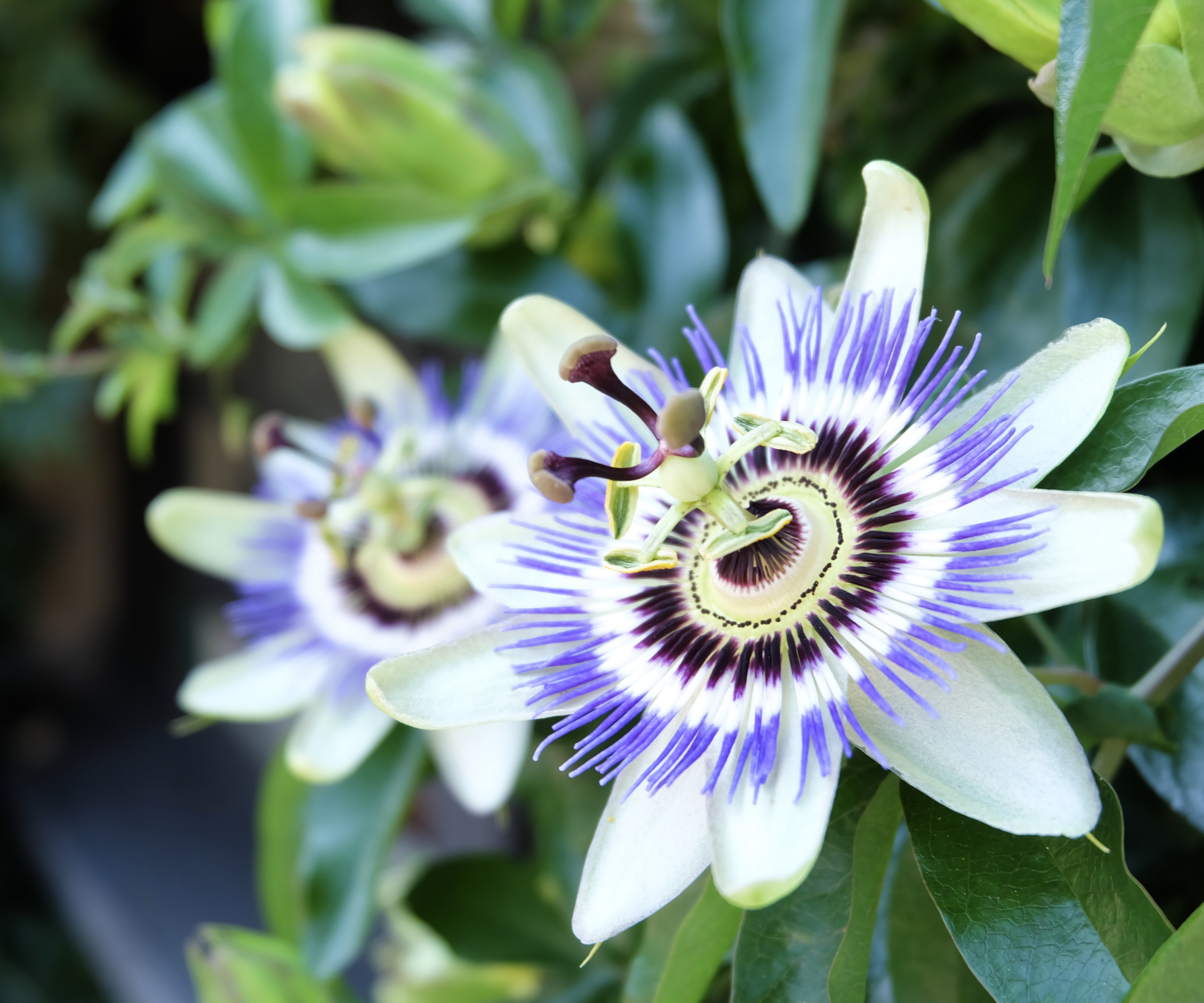
"If you want to bring an exotic feel to your garden, then the Passion Flower is a good choice for fences. It flowers from June to November with large, eye-catching blooms that typically boast white petals with purple frills and a yellow centre," says garden expert at MyJobQuote Fiona Jenkins
Passion Flowers are vigorous climbers, so they don’t take long to brighten up dull fences. Try the hardy and fast-growing Passiflora 'Riverside Damsel's Delight' or the Passiflora caerulea, with its stripey summer blooms and edible fruits."
Try Passion flower 'Damsels Delight' Hardy Climber in 9cm Pot at eBay. "Passion Flowers can be grown in full sun or partial shade with a trellis or horizontal wires to help them climb. They can be grown in containers, making them suitable for front garden fences and patio gardens but do repot it every few years to keep them healthy," says Fiona.

A landscaper and gardening expert with over 25 years of experience in the industry. Currently she works for MyJobQuote as their resident expert on all things gardening. She is highly knowledgeable and her expertise have featured in many reputable publications.
3. Climbing hydrangeas
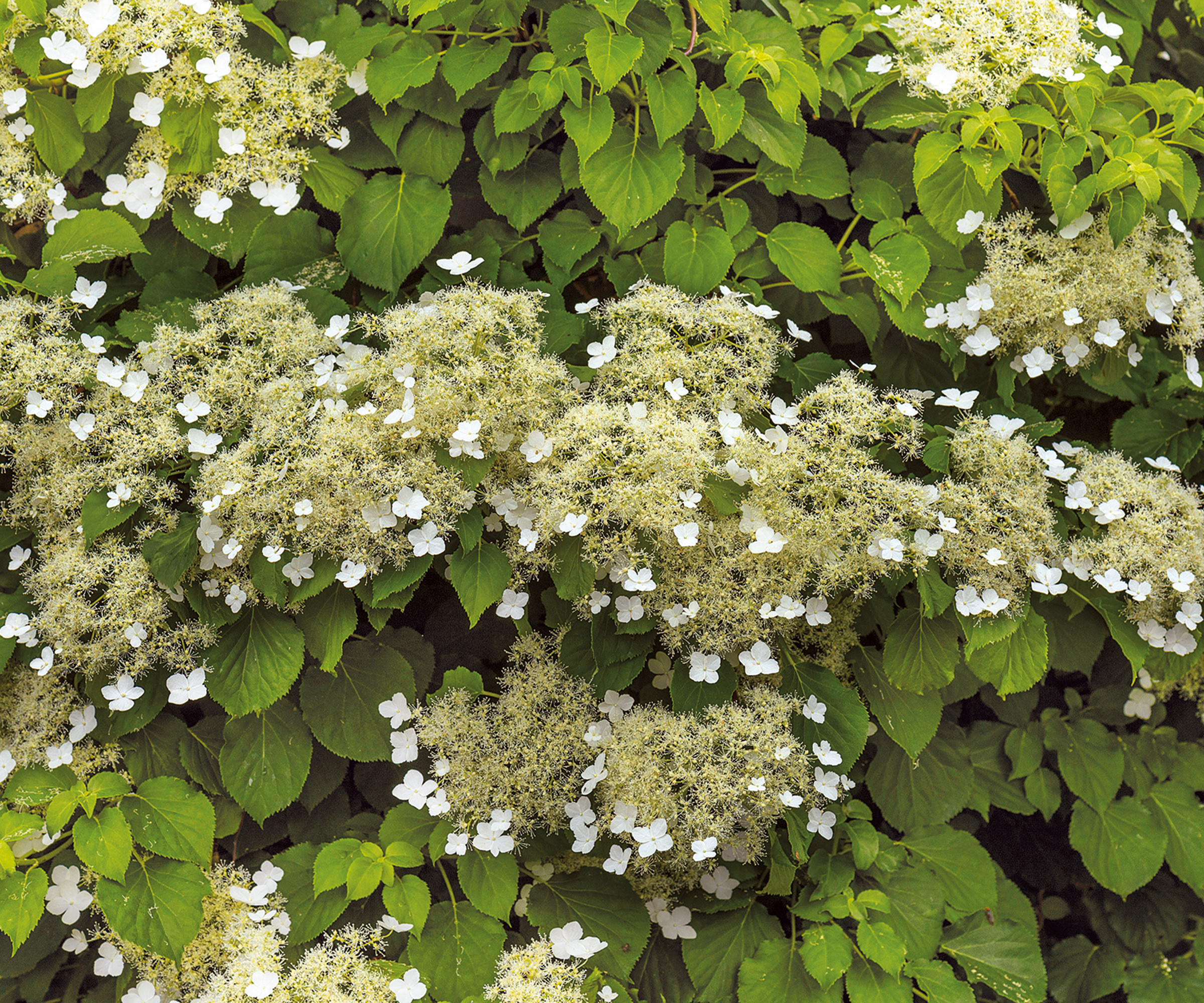
"For a north-facing fence, Hydrangea petiolaris is invaluable. Although a little slow to get going, once its roots are established it will romp away to cover a large fence with fresh green leaves and lacy white summer blooms that flower in abundance, even in the shade," says Thompson & Morgan's horticultural expert, Annelise Brilli.
"Further interest is provided in autumn when the leaves turn buttery yellow. Self-clinging, it requires no support and no regular pruning other than light trimming to keep it in bounds. In a warm sheltered site, swap it for the lesser-known Hydrangea seemannii, which has similar flowers but also offers handsome, evergreen foliage that will hide your fence all year round," says Annelise.
Try Hydrangea seemannii at Thompson & Morgan as a great plant for shade.
4. Camellia
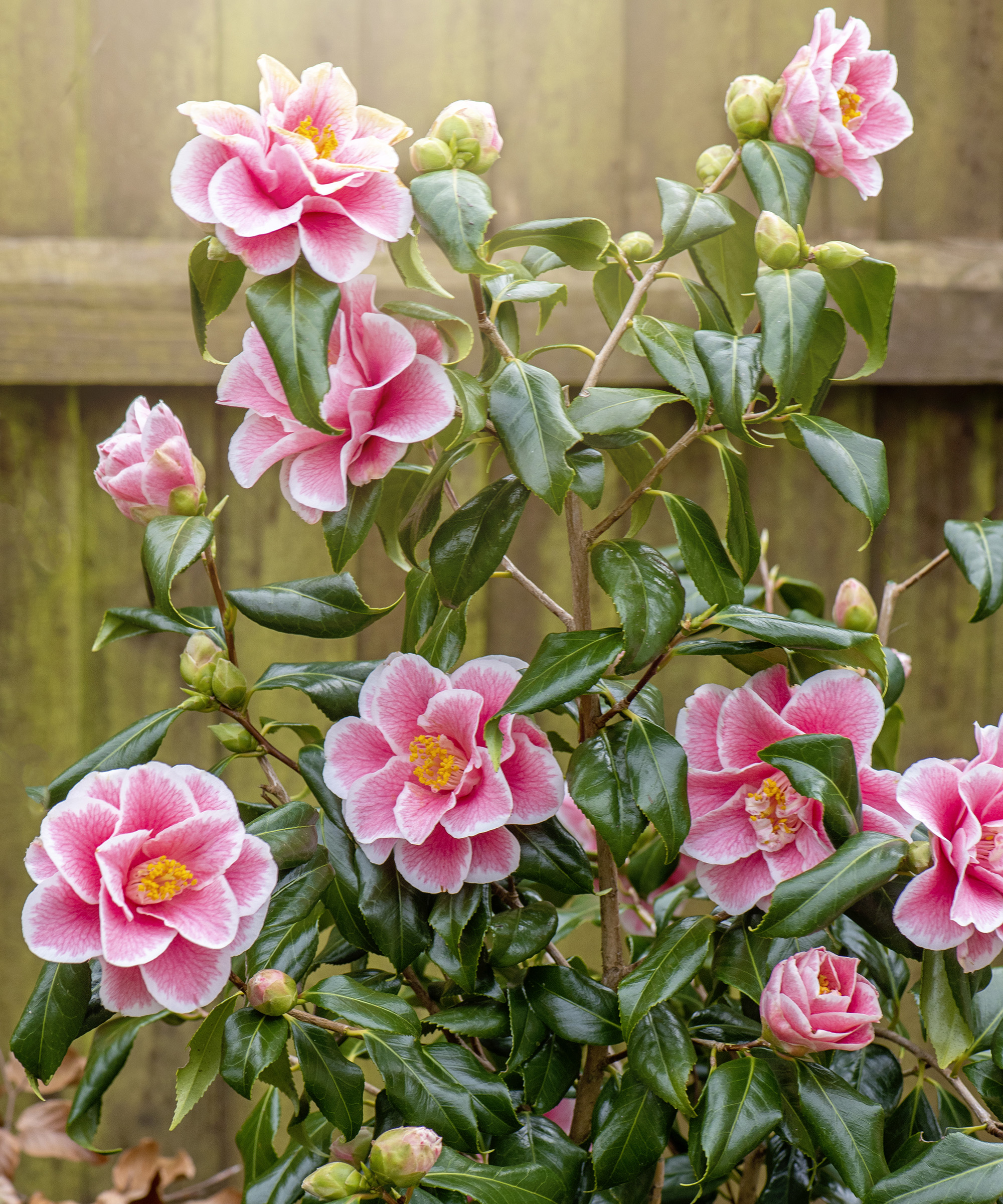
Plant camellia on an east or north-facing fence. When buying a camellia plant at the garden centre, you'll want to select one which has plenty of buds already, as this will mean you get a good display in your first year.
The flowering season for camellia is autumn when they produce rose-like blooms in colours ranging from white to red. They like a shaded spot but can cope with sun too. Be sure to water them regularly in summer so they don't dry out.
The brighter the spot, the more watering they'll need, but you can help your plants retain precious moisture by mulching around the base.
For a real talking point try Camellia Tricolour at B&Q, which has three different coloured flowers growing off the same plant.
5. Akebia quinata
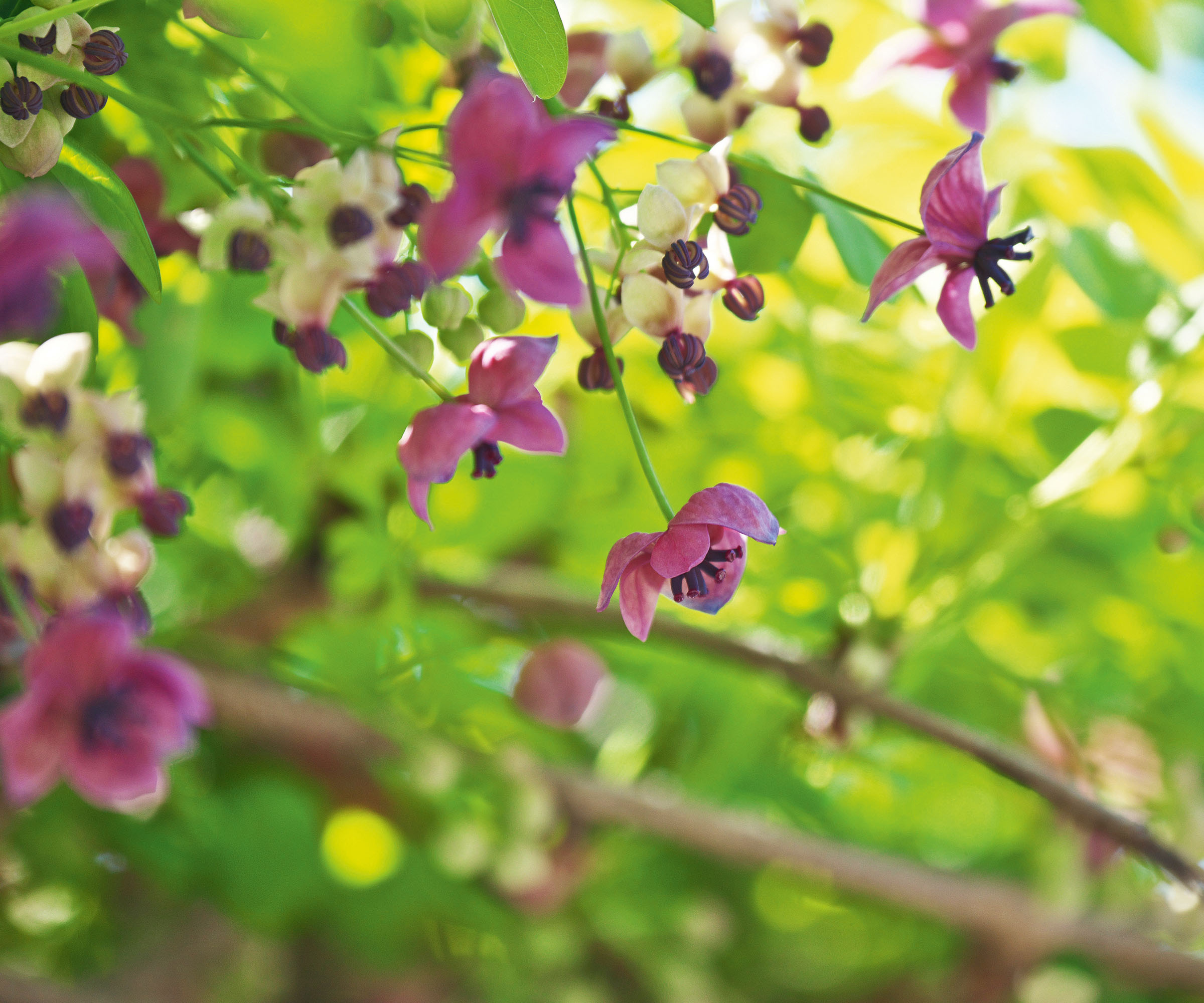
This scrambling climber produces maroon flowers in spring which smell vaguely of cocoa, earning it its other name the Chocolate Vine. As well as its spring flowers you'll enjoy its semi-evergreen green leaves for the rest of the year.
It will scale all fence types with ease as it grows to an eventual height of 3m. It's ideal for an east-facing fence or garden wall and favours well-draining soil.
Though best known for their dark purple blooms there are varieties such as Akebia quinata - Cream Form - White Chocolate Vine at Gardening Express, after the flowers are over in summer, the akebia will produce small edible fruits.
6. Pyracantha
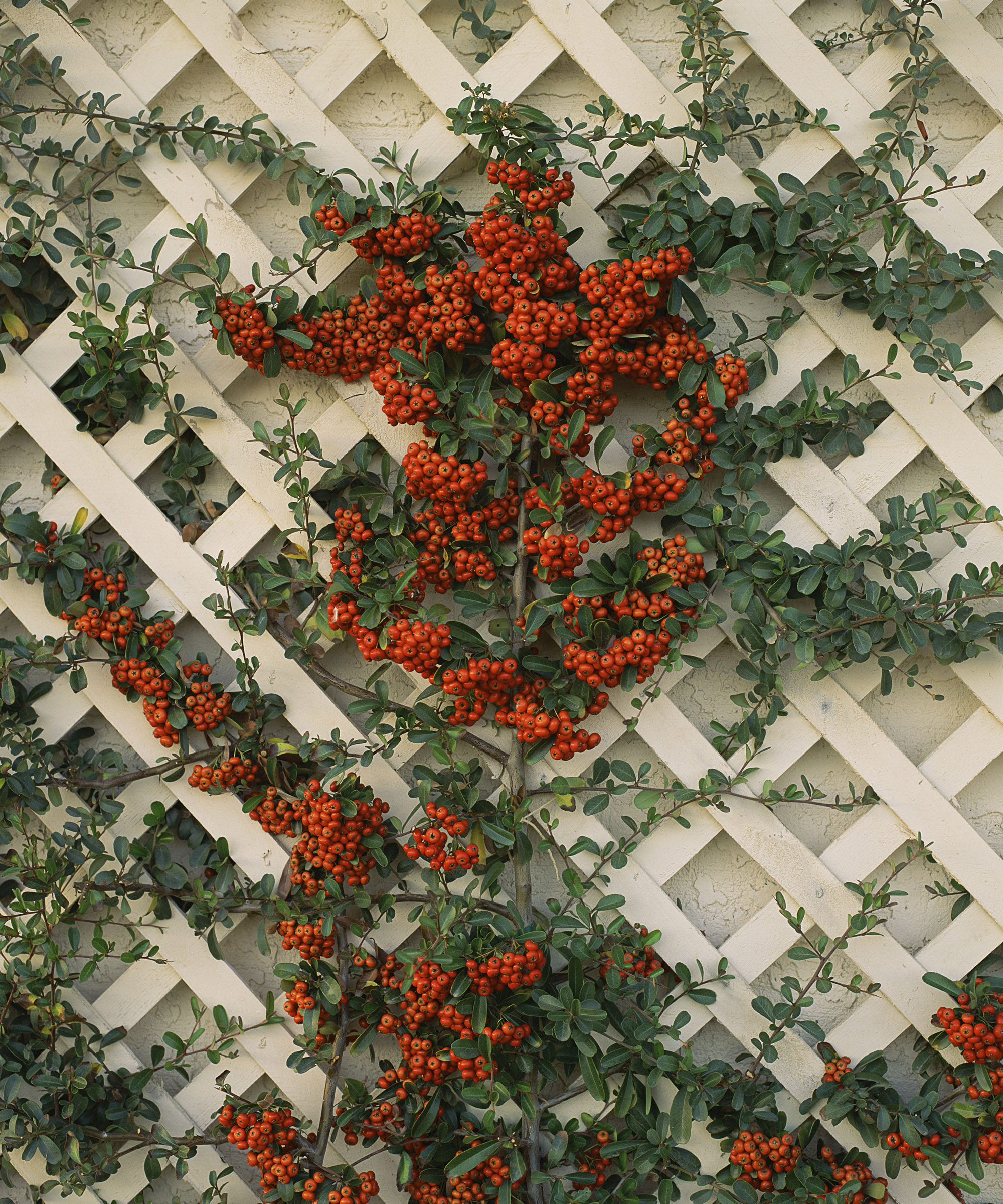
Pyracanthas will thrive on east and north-facing fences and garden walls, anywhere in the UK. That's not to say they can't be planted in west and south-facing spots too, but you are better off saving those spots for climbers like clematis and roses which will really benefit from warm spots.
If there is direct shade overhead, pyracantha might struggle to produce fruit. If you have plenty of outdoor space you could even replace a fence altogether and grow pyracantha as a fast-growing hedge plant.
Try Pyracantha - Pack of 10 for Hedging at Gardening Express, currently on sale for £59.99 instead of £99.99.
7. Clematis
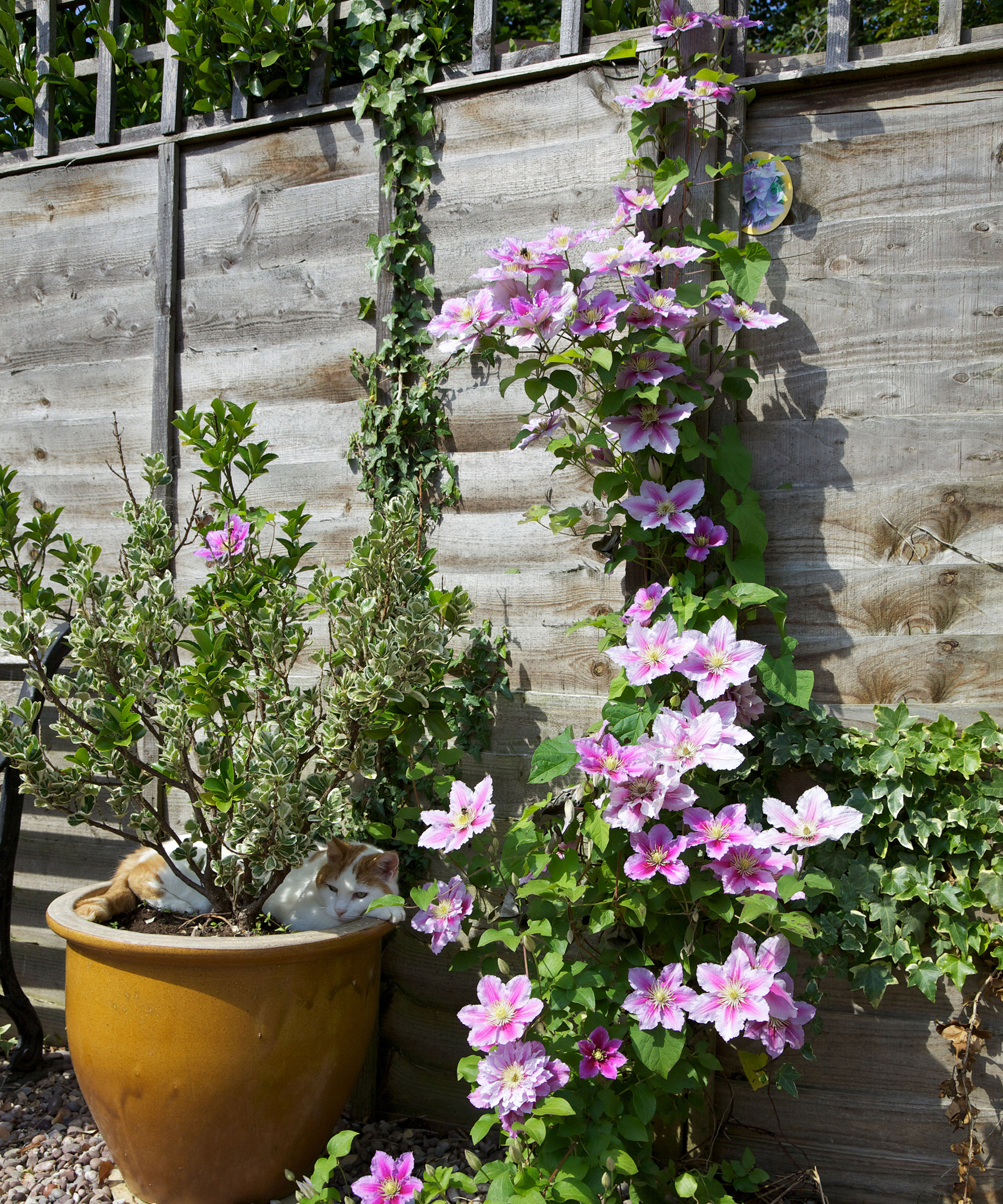
"Clematis are one of the best climbing fence plants as they’re pretty easy to train and produce large, attractive flowers. There are plenty of varieties to choose from, so it shouldn’t be hard to find one that fits in with your garden design," says Fiona Jenkins.
"Clematis 'Bill MacKenzie' aka the Orange Peel Clematis produces lots of citrussy-looking yellow flowers. These contrast nicely with its vibrant green leaves, creating a tropical, holiday vibe. This clematis typically blooms from July to November and is happy in sun or partial shade, so you can grow it on north-facing fences."
It likes well-draining soil types that are neutral to alkaline, so slightly chalkier soils. You’ll need to give this clematis a good prune in late winter to encourage it to develop lots of flowering stems.
If it’s a splash of winter colour you’re after, the evergreen Clematis Advent Bells at Thompson & Morgan it flowers with red speckled blooms between November and March.
8. Jasmine
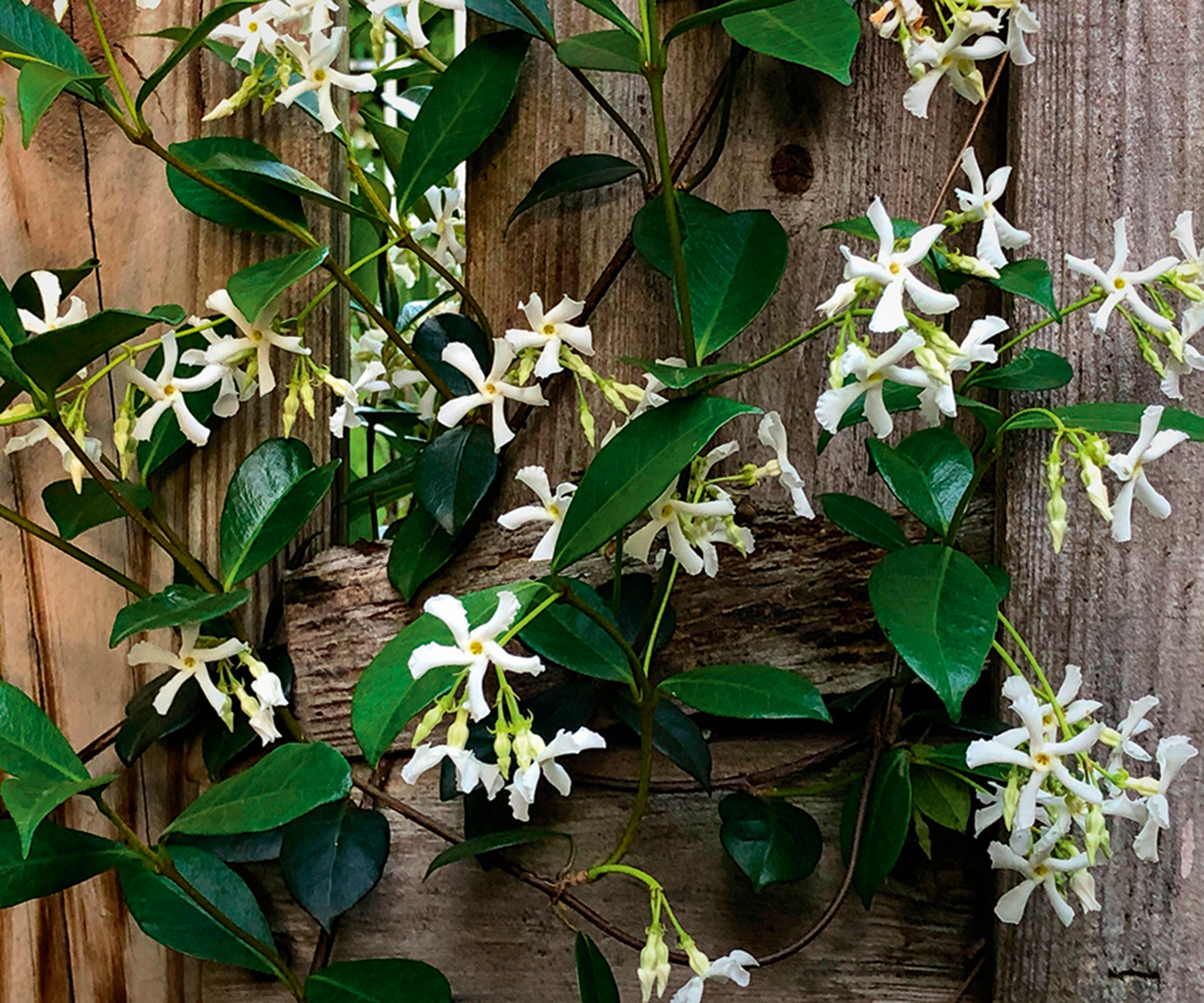
Landscape design professional at Springfield Steel Buildings John Davis, likes jasmine for fragrant blooms with evergreen foliage giving year-round interest.
"Jasmine thrives in well-drained soil and benefits from regular pruning to maintain its signature shape. It's perfect for setting a certain mood through its potent scent," says John.
There are winter and summer varieties of climbing plants that range from white, yellow and pale pink, star-shaped flowers. All of which have a delightful scent. Try Jasminum nudiflorum at Crocus for yellow winter flowers.
9. Ivy
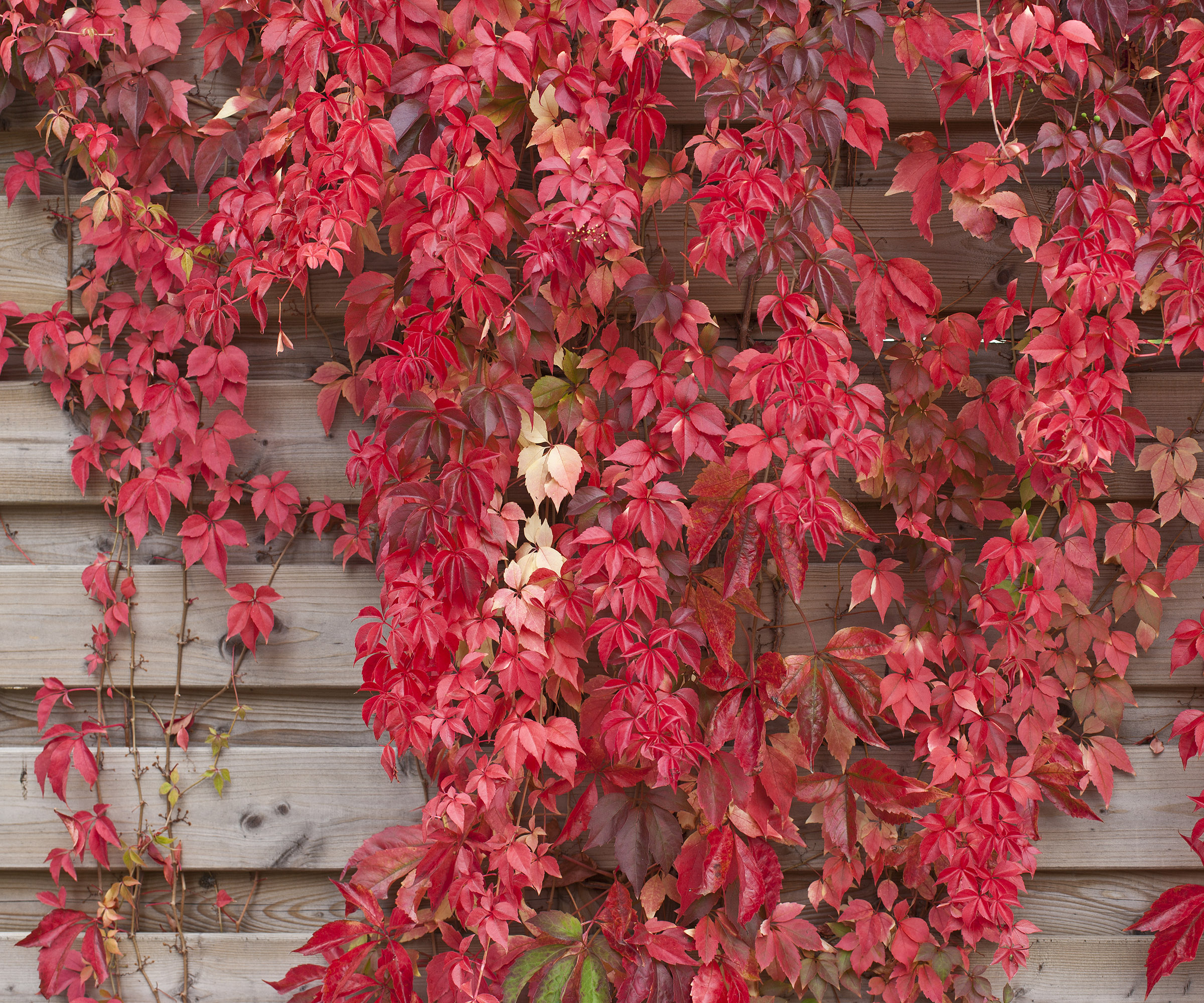
"Ivy is a great climbing fence plant to grow as it provides shelter year-round to birds and small mammals that may visit your garden. It is usually recognisable through its evergreen foliage, and it produces aerial roots along its stems to support itself," says Graham Smith MCIhort, a gardening expert from LBS Horticulture.
"Varieties such as Boston ivy or Virginia creeper are less likely to be plants that can damage your home or fence, but any kind of ivy will be fine provided that any nearby buildings are structurally sound."
"Plant ivy in a hole the same depth as its root ball, and water it well. As it is self-clinging, it will not need to be supported or trained with wire. Aim to keep the soil moist while the plant is establishing, and it should be relatively tolerant of drought after this. You do not need to prune ivy, but you can cut back excess growth at any time of the year, although it is best to do this in spring," says Graham.

Graham has extensive knowledge in the horticultural and gardening industries, and prides himself on using this to help gardeners of all skills create their perfect outdoor space.
FAQs
What is the best climbing plant for a fence?
If you're wanting to cover a fence with climbing plants, the best variety depends on whether your fence is in shade or sun.
For north-facing fences opt for shade-loving climbers such as ivy (hedera helix) and hydrangeas can grow in shade. Certain clematis such as 'Nellie Moser' can tolerate partial shade, as will honeysuckle.
For south-facing fences, there are plenty of plants for sun, including clematis, roses, wisteria and passion flowers.
Growing climbing plants is just one way to cover a boring fence. Check out our guide for more inspiration.
Get the Homebuilding & Renovating Newsletter
Bring your dream home to life with expert advice, how to guides and design inspiration. Sign up for our newsletter and get two free tickets to a Homebuilding & Renovating Show near you.

Teresa was part of a team that launched Easy Gardens in 2018 and worked as the Editor on this magazine. She has extensive experience writing and editing content on gardens and landscaping on brands such as Homes & Gardens, Country Homes & Interiors and Living Etc magazine. She has developed close working relationships with top landscape architects and leading industry experts, and has been exposed to an array of rich content and expertise.
In 2020 Teresa bought her first home. She and her partner worked alongside architects and builders to transform the downstairs area of her two bedroom Victorian house in north London into a usable space for her family. Along the way she learned the stresses, woes and joys of home renovation, and is now looking to her next project, landscaping the back garden.
